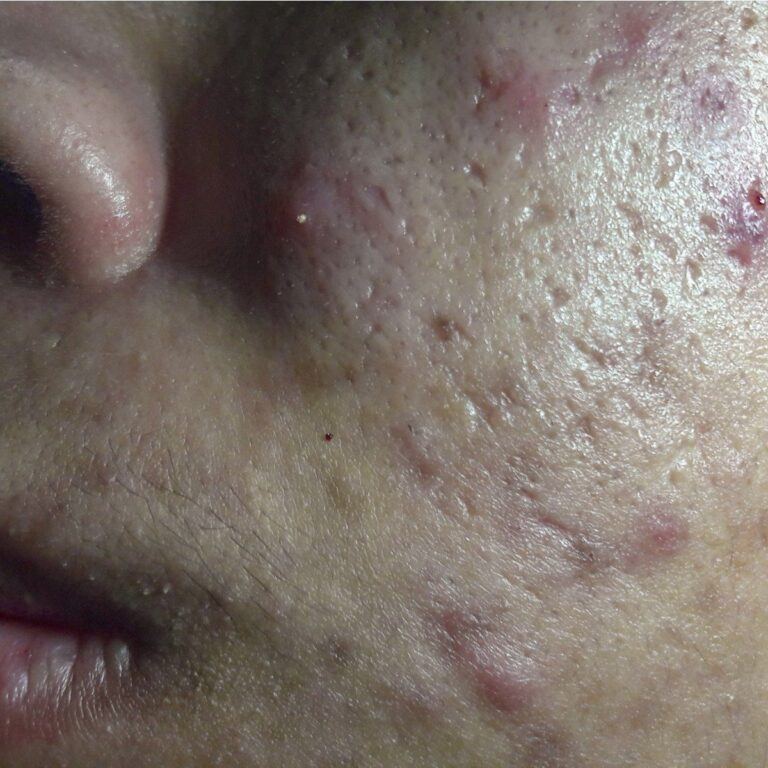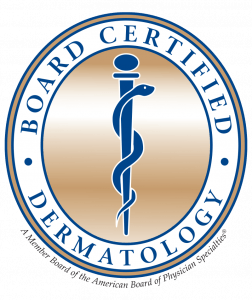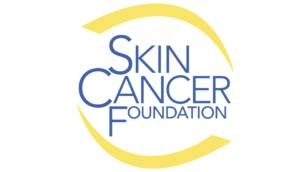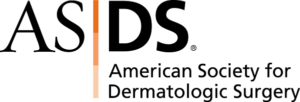
Subcision
TCA CROSS Peel
Microneedling
Types of Acne Scarring
Acne scarring can be a source of embarrassment, social isolation, depression, and poor self-esteem. Several factors contribute to scarring including acne lesion severity, physical manipulation of the skin, family history of scarring, and delays in seeking treatment. Is essential to aggressively treat any existing acne to prevent further scarring. Once scarring has developed, “defect-oriented therapy”dictates the appropriate treatment method.
Ice pick scars: narrow, less than 2 mm deep “pitted” scars that taper to a point at the base. These are most common on the cheeks.
Boxcar scars: broader scars with well-defined vertical edges like a chickenpox scar. These are wider at the surface then ice pick scars. These may have a deep or shallow base.
Rolling scars: these tend to be broad depressions with subtle sloping edges due to tethering below or loss of volume. The appearance of rolling scars may differ depending upon lighting and may be accentuated with smiling.
Atrophic scars: significant depressions in the skin from loss of collagen usually with a white (loss of pigment) or red appearance. These are most often seen on the temples and trunk.
Hypertrophic scars: firm, raised, elevations most common on the trunk.
Red acne scars: these are not true scars, but rather areas of persistent redness in sites of previous acne cysts. They usually resolve over several months without leaving permanent scars but on occasion are the precursor to further depressed scarring.
Treatments for acne scarring
- Multiple treatment options are available at Craig Singer MD Dermatology for the treatment of acne scarring. As most scars are multifactorial, a combination approach is usually indicated.
CROSS: “Chemical reconstruction of skin scars” uses a high concentration of acid (either carbolic or TCA) to break down old scar tissue and regenerate new collagen to fill-in the scar. Cost: $300-$400 (depending upon number of areas to be treated).
Subcision©: “Subcutaneous incisionless surgery” uses a needle or blunt tip cannula to release tethering bands that pull the skin down, thereby elevating the scar. Cost $600-$750 (depending upon number of areas to be treated).
Microneedling: uses an automated device to break horizontal bands of collagen, leading to the release of growth factors and production of new collagen. Cost $250/session
Vivace RF Microneedling: Vivace is an FDA cleared device that uses radiofrequency to heat the dermis, stimulating collagen and elastin production. Cost: $550 session
Peels: soften appearance of new scars by regenerating a fresh layer of skin. Cost varies depending upon type of peel.
532 KTP laser: lightens red acne scars by targeting hemoglobin in the skin and helps regenerate a mild amount of collagen. $325/session
Fillers: injected into rolling and atrophic scar to elevate the surface and contour. Cost: $450 for 1/2 syringe of Juvederm Vollure
Punch excision/elevation: surgical technique to remove a tiny scar or elevate a box car scar. Cost: $150/excision. Discount applied for multiple scars.
Most people need 2-4 sessions of combination treatments to achieve results.
Available treatment options at Craig Singer MD Dermatology
| Ice Pick Scars |
• CROSS using either Carbolic acid or TCA • Punch excision |
| Rolling Scars |
• Subcision • Vivace RFMN • Filler |
| Box Car Scars |
• CROSS (deep boxcar) • Fractionated Ablative Erbium 2940 • Vivace RFMN • Pen Microneedling • Chemical Peels |
| Atrophic Scars | • Fillers |
| Red Scars | • 532 KTP laser |
Sources
A Combination Approach to Treating Acne Scars in All Skin Types: Carbolic Chemical Reconstruction of Skin Scars, Blunt Bi-level Cannula Subcision, and Microneedling-A Case Series. J Clin Aesthet Dermatol. 2020 May;13(5):19-23. Epub 2020 May 1.
Acne scarring: a classification system and review of treatment option C I Jacob 1, J S Dover, M S Kaminer J Am Acad Dermatol. 2001 Jul;45(1):109-17.








